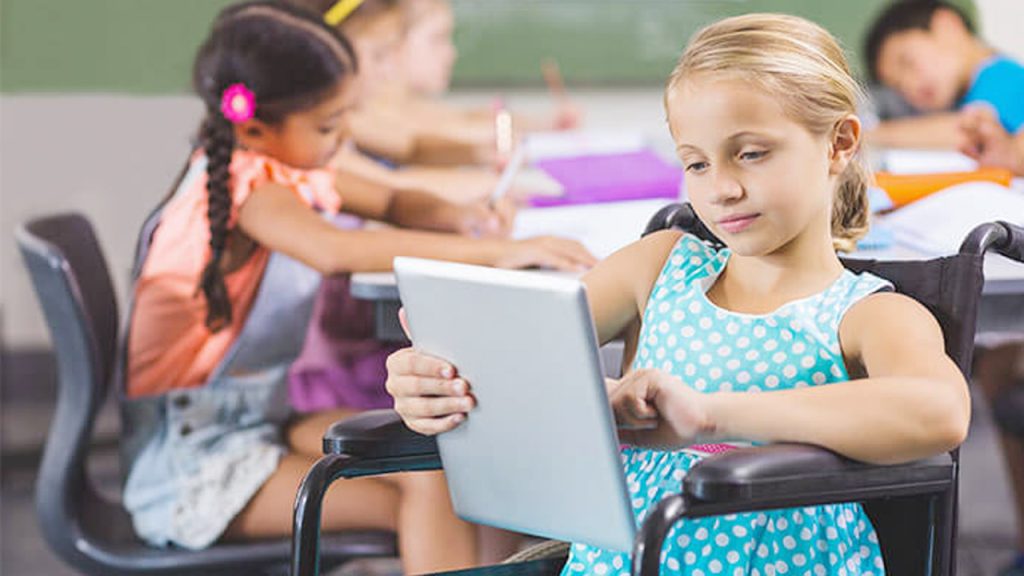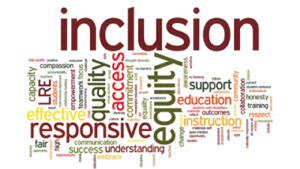Assistive technology for special needs students has revolutionized the way disabled individuals access education. With the advancements in technology, students with disabilities can now overcome barriers and experience the benefits of technology in their educational journey.
Technology offers a range of tools and solutions that cater to the diverse learning needs of disabled students. From customized applications to assistive devices, technology provides innovative support systems that empower students with disabilities to achieve academic success.
Not only does technology enhance accessibility for students with disabilities, but it also fosters inclusivity in the classroom. By incorporating inclusive technology in education, we can create a learning environment that addresses the unique challenges faced by special needs students.

Photo by community.connection
In this article, we will explore the role of assistive technology in inclusive education and the various accessibility tools available for students with disabilities. We will also highlight specific examples of how technology has transformed the learning experience for disabled students.
Assistive Technology in Inclusive Education
In today’s rapidly evolving educational landscape, inclusive technology in education plays a crucial role in transforming the learning experience for diverse learners. Assistive technology, in particular, offers innovative solutions that cater to the unique needs of students with disabilities, ensuring equal access to educational opportunities.
Tech solutions for diverse learners encompass a wide range of tools and devices designed to support students with disabilities in their educational journey. From interactive learning software to specialized hardware, assistive technology empowers students to overcome barriers and maximize their potential.
One of the key advantages of inclusive technology is its ability to provide customized learning experiences. Students with diverse learning needs can benefit from tailored solutions that address their specific challenges. For example, students with visual impairments can utilize screen reading software or Braille displays, while those with hearing impairments can utilize captioning or sign language interpretation tools.
Empowering Students with Disabilities
Assistive technology not only bridges the gap between students with disabilities and mainstream educational resources, but it also empowers them to actively participate in the learning process. By offering alternative methods of input and output, such as speech recognition or alternative keyboards, technology enables students with physical disabilities to engage in academic activities alongside their peers.
Assistive technology fosters independence among students with disabilities, promoting self-reliance and boosting self-esteem. It enables them to access information, complete assignments, and demonstrate their knowledge effectively, fostering a sense of accomplishment and inclusion within the educational setting.
The use of tech solutions for diverse learners enhances collaboration and communication among students. With the assistance of assistive technology, students can engage in group projects, participate in discussions, and share ideas, regardless of their disabilities. This promotes a sense of unity and teamwork, contributing to a truly inclusive learning environment.
Inclusive technology in education and tech solutions for diverse learners have revolutionized the way students with disabilities access and engage with educational content. By providing customized solutions and fostering independence, assistive technology empowers these students, enabling them to thrive academically and contribute to society.
Accessibility Tools for Students with Disabilities
In today’s digital age, the availability of accessibility tools has revolutionized the educational experience for students with disabilities. These powerful tools are designed to bridge the gap and provide inclusive learning environments for all students, regardless of their abilities. By leveraging technology accommodations for disabled students, educators can create a more accessible and equitable educational experience.
Assistive Technology: A Game-Changer for Disabled Students
Assistive technology plays a pivotal role in empowering students with disabilities, giving them the tools they need to access educational resources effectively. These accessibility tools for students with disabilities encompass a wide range of solutions, including screen readers, speech-to-text software, magnification tools, and alternative input devices.
Screen readers, for instance, enable students with visual impairments to navigate through text and digital content by converting written text into synthesized speech. This technology ensures equal access to educational materials, empowering students to engage with their coursework independently.
Similarly, speech-to-text software facilitates communication for students with physical disabilities. By converting spoken words into written text, it removes barriers for those who struggle with traditional writing methods. This technology allows students to express their thoughts and ideas without the limitations posed by their disability.
Technology Accommodations Tailored to Individual Needs
One of the greatest advantages of accessibility tools is their ability to be tailored to meet individual needs. These tools can be personalized to the specific requirements of each student, ensuring a customized and productive learning experience.
For students with learning disabilities, tools like text-to-speech software and electronic graphic organizers provide invaluable support. Text-to-speech software reads aloud text-based content, enabling students to comprehend and absorb information more effectively. Electronic graphic organizers, on the other hand, help students with organizing their thoughts and ideas, enhancing their ability to plan and structure assignments.
Note-taking apps and augmented reality tools offer innovative ways for students with disabilities to interact with their coursework. Note-taking apps allow students to capture and review class notes digitally, making it easier for them to stay organized and access their materials from any device. Augmented reality tools, on the other hand, bring learning to life by overlaying digital information onto the real world. This engaging technology stimulates student creativity and promotes immersive learning experiences.
Embracing Technology for Inclusive Education
As technology continues to evolve, so do the accessibility tools available to students with disabilities. These tools not only eliminate barriers but also promote a sense of belonging and equal opportunity within the educational community.
In embracing technology accommodations for disabled students, educators and institutions can foster an inclusive educational environment that celebrates diversity and supports the unique needs of every learner. By integrating accessibility tools seamlessly into the curriculum, we can ensure that students with disabilities have the same opportunities to thrive and succeed as their peers.
Innovative Support for Students with Disabilities
Technology has revolutionized the support available for students with disabilities, providing innovative solutions that enhance their learning experience. Assistive devices tailored to meet the specific needs of students with special needs have emerged as game-changers in inclusive education.
One such example is the use of electronic text-to-speech software, which allows students with visual impairments or reading difficulties to access educational materials effectively. By converting written text into spoken words, this assistive device enables students to comprehend and engage with the content at their own pace.
Another groundbreaking innovation is the development of augmented reality (AR) tools that support students with physical disabilities. AR simulations can create virtual environments where students can participate in interactive learning activities, regardless of their physical limitations. This immersive technology opens up a world of possibilities, fostering engagement and active participation.
Assistive devices like speech recognition software empower students with mobility impairments or communication difficulties. These tools convert spoken words into text, enabling students to dictate assignments, participate in discussions, and express themselves effectively.
Empowering Independence
Technology not only assists students with disabilities but also empowers them to become independent learners. Electronic organizers and task managers help students with executive function challenges to plan, organize, and manage their academic responsibilities effectively.
Adaptive learning platforms leverage artificial intelligence to provide personalized learning experiences for students with disabilities. These platforms analyze students’ individual strengths and weaknesses, adapt the content accordingly, and offer targeted interventions, ensuring effective and efficient learning.
Building Confidence and Self-Esteem
Innovative support systems go beyond providing technical assistance; they play a vital role in boosting students’ confidence and self-esteem. Virtual reality (VR) experiences, for example, offer students with sensory disabilities the opportunity to explore virtual worlds and engage in real-life simulations. This hands-on approach fosters a sense of achievement and self-confidence among students, encouraging them to overcome challenges and reach their full potential.
Assistive devices such as mobility aids and adaptive tools ensure that students with physical disabilities can navigate their educational environments independently. By removing barriers to access and promoting inclusivity, these devices enable students to participate fully in educational activities, contributing to their overall well-being and fostering a sense of belonging.
Innovative support systems and assistive devices have transformed the educational landscape for students with disabilities. Through technology, students are provided with tailored solutions that enhance their educational journey, foster independence, and build confidence. As advancements continue to be made, it is crucial to recognize the immense potential technology holds in creating an inclusive and equal learning environment for all students.
Conclusion
In conclusion, the integration of assistive technology has had a profound impact on students with disabilities, revolutionizing their educational experiences. By providing tailored solutions to meet their unique needs, technology has empowered these students to overcome barriers and access educational resources effectively.
The benefits of assistive technology for disabled students are far-reaching. It has fostered inclusivity and equality in the classroom, allowing students with disabilities to actively participate and engage in the learning process. Through the use of innovative support systems and accessibility tools, these students have been able to achieve academic success and reach their full potential.
The journey does not end here. Continued advancements in assistive technology are essential to further enhance the educational environment for students with disabilities. As we move forward, it is crucial to prioritize the development of inclusive technology and ensure equal opportunities for all learners. By doing so, we can create a future where every student, regardless of their abilities, can thrive and succeed.




